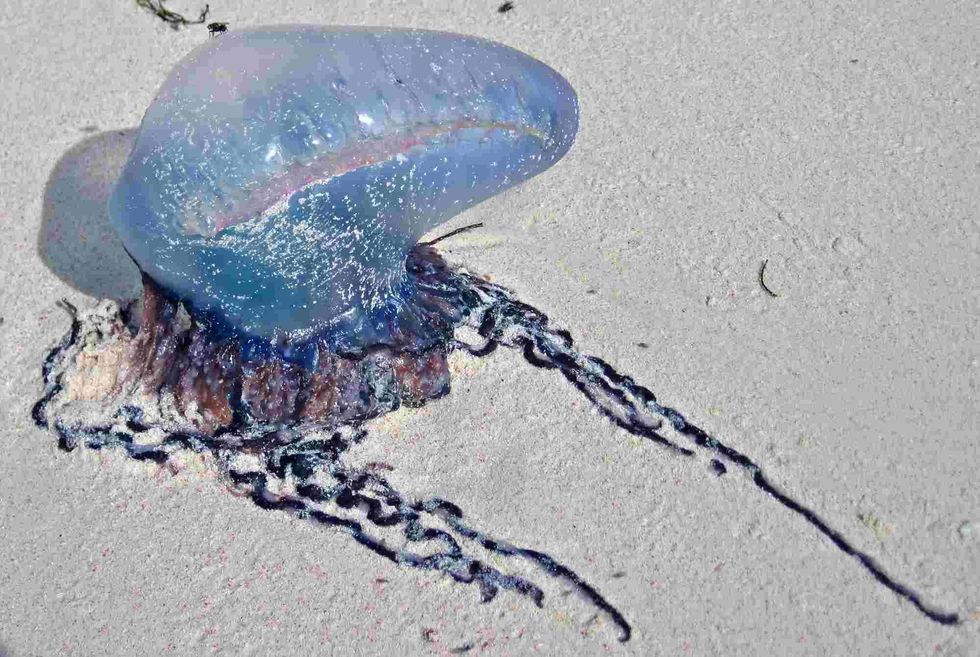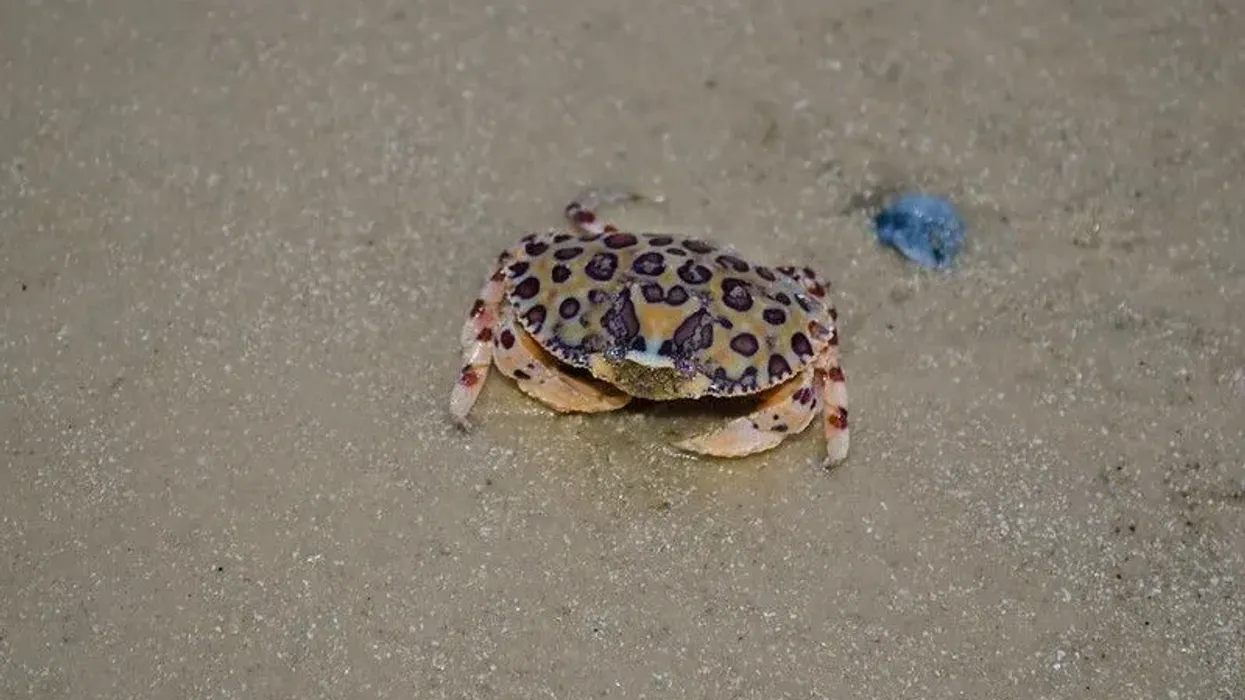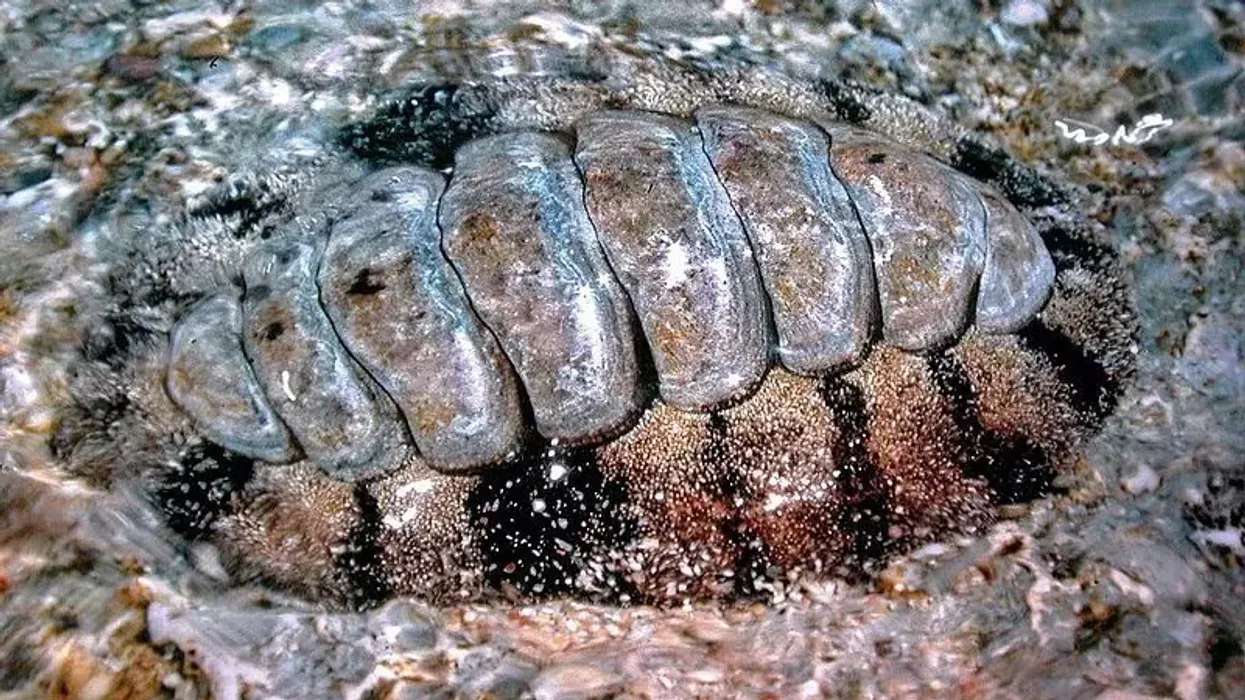In this article, we shall read about an interesting creature whose alternative name is 'floating terror'!
This article is about the Portuguese man of war (Physalia physalis) which lives in a number of oceans namely the Indian, Atlantic, and Pacific oceans. With the power of waves, this creature often is washed up on a beach.
It is also called the 'bluebottle' because of its blue floating upper body that looks like a bottle.
Many people find them similar to jellyfish because of their body shape and their similar-looking tentacles but both morphologically and anatomically these creatures vary a lot on different grounds.
Man o war are good predators, they are carnivores who feed on small fish and planktons. Their body color is a mixture of blue and purple and they use their venomous tentacles to sting their prey and make them paralyzed so they can easily feed on them.
Keep reading to find some more interesting and fun man o war facts about what type of animal it is and how it is different from a jellyfish. If you like reading fish facts, then do check out these blue catfish facts and cobia facts.
Man-Of-War Interesting Facts
What type of animal is a man-of-war?
The Portuguese man of war is an ocean hydrozoan species that can be found floating in groups in the Atlantic, Pacific, and Indian oceans. Belonging to the family Physaliidae, the man of war feeds on smaller fish and planktons.
What class of animal does a man-of-war belong to?
The Portuguese man of war belongs to the class Hydrozoa, the family Physaliidae and the order Siphonophorae. The scientific name given to this species is Physalia physalis.
How many man-of-war fish are there in the world?
The population of the Portuguese man of war is not considered to be endangered. There has never been a proper census, so an exact count of these animals is still not known.
Where does a man-of-war live?
The Portuguese man of war lives in both tropical and subtropical waters. The Portuguese man of war is a marine hydrozoan that is often seen floating above seawater. Most of its body stays submerged and searches for suitable prey.
What is a man-of-war's habitat?
Portuguese man of war colonies are naturally seen floating in the tropical and subtropical waters of the Atlantic Ocean, the Indian Ocean, and the Pacific Ocean. Because they have no mobility of their own, sea winds and waves carry them to coastal regions, where they can be seen on many beaches.
Who does a man-of-war live with?
The Portuguese man of war is a marine hydrozoan that lives in colonies. Colonies of the Portuguese man of war consist of either males or females.
This species hunts and protects itself by staying in groups and if one of them gets detached from the group, it eventually dies. The leafcutter ant is a great example of another, completely different, species that lives in colonies.
How long does a man-of-war live?
The longevity of the Portuguese man of war depends on various factors like the water temperature and the availability of food. Still, the Portuguese man of war has an average lifespan of just one year.
How do they reproduce?
Portuguese men of war live in colonies that consist of either all male or all female individuals. For reproduction, the male colony or the female colony release their gametes (sperm or egg) into the water. These gametes fertilize asexually, giving rise to a new male or female colony.
What is their conservation status?
The Portuguese man of war species is Not Evlauted by the IUCN Red List. It is believed that they can be found in a good quantity but they do not currently have a conservation status tag.
Man-Of-War Fun Facts
What does a man-of-war look like?
The Portuguese man of war is an ocean hydrozoa whose looks are related to a jellyfish. A man o war is blue-purple colored. They float on water with the help of their air-filled bladder, while their dark blue venomous tentacles stay submerged in the water and search for prey.
How cute are they?
Men of war are not very cute. They sometimes look like an air-filled plastic bag is floating on the sea. They are also venomous and can cause harm to humans.
How do they communicate?
The Portuguese man of war is a floating sea hydrozoan. They don't possess a brain and therefore can't communicate.
How big is a man-of-war?
The part of the Portuguese man of war that floats over the water surface is around 6 in (15.2 cm) tall and 3.5-11.8 in (9-30 cm) long, while the tentacles that stay underwater can be maximum of 164 ft (50 m) long.
How fast can a man-of-war swim?
The Portuguese man of war can't swim on its own. These hydrozoa require a medium to move. Their movement speed in the sea depends on the speed of the flowing wind and waves.
How much does a man-of-war weigh?
The Portuguese man o war's float height can be around 6 in (15.2 cm), and it can be 3.5-11.8 in (9-30 cm) long. Its tentacles can be as long as 165 ft (50 m). So depending on the size of their tentacles, their weight may vary. Information about their exact weight is not yet available.
What are their male and female names of the species?
The Portuguese man of war lives in colonies of all males or all females and there are no seperate names for males and females.
What would you call a baby man-of-war?
There is no specific name assigned to a baby man o war jellyfish.
What do they eat?
The Portuguese man of war jellyfish is a carnivorous hydrozoa that feeds on small fish, planktons, shrimps, and other small sea animals. Its venomous tentacles sting animals and paralyze them. Then they gradually drag their prey upwards to the digestive polyps and eat it.
Are they poisonous?
Yes, they are poisonous and dangerous. A Portuguese man of war uses the venom present in the stinging cells on its tentacles to trap and paralyze its prey. Humans can be bitten by them on the beach.
The painful venom-sring of a Portuguese man of war doesn't often cause a risk to the life of a human but it does cause severe pain, leaving a trail of sting marks. In extreme situations, it may cause death, but this situation is extremely rare. Humans don't eat these creatures.
Would they make a good pet?
Not at all. The Portuguese man of war, unlike different jellyfish, is an ugly-looking creature that floats in the ocean and hunts smaller creatures. They can't be kept as pets as they are venomous and can be dangerous.
Did you know...
The man o war is a floating hydrozoan that got its unique name from its floating upper body. The man o war's gas-filled pneumatophore while floating looks a little like a warship with a sail. From this, the species got its famous name.
Another similarly named species is the Portugese man of war fish (Nomeus gronovii), and something special about these fishes is that they exist in the same environment as the Portuguese man o war and as they can resist its nematocysts tentacles and they are very agile swimmers.
Can a man-of-war kill you?
Going to a beach and getting bitten by a Portuguese man of war is not uncommon in Australia. The venom in their stings causes extreme pain but it only very rarely causes death. The first few hours after venom stings can be very painful and their stings can cause health issues but causing death is a very rare phenomenon.
What's the difference between the jellyfish and a man-of-war?
A jellyfish and a Portuguese man of war may look similar but are not same creatures and have many differences. One common difference that can be pointed out is in regards to their movement mechanism as a jellyfish can move using its upper body part but the Portuguese man of war cannot move on its own.
Also, jellyfish are predators that can be found near the surface as well as in the depth of the sea.
Meanwhile, the Portuguese man of war floats on the water surface and uses tentacles to find their prey.
A jellyfish can live both in colonies and alone but the man o war depends entirely on its colony. If one of them gets separated from the group, it may cause death.
Here at Kidadl, we have carefully created lots of interesting family-friendly animal facts for everyone to discover! For more relatable content, check out these gray dwarf hamster facts and golden-crowned sifaka facts for kids.
You can even occupy yourself at home by coloring in one of our free printable man of war coloring pages.









